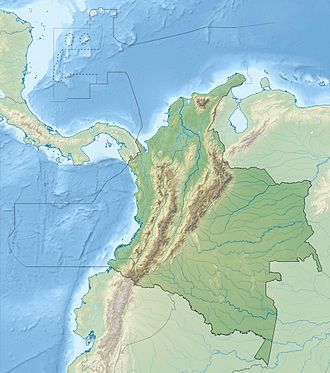| Siecha Lakes | |
|---|---|
 Siecha Lakes, from left (east) to right (west) Siecha, Guasca, De los Patos | |
| Location | Guasca, Cundinamarca |
| Coordinates | 4°45′52″N73°51′04″W / 4.76444°N 73.85111°W |
| Type | Glacial |
| Part of | Chingaza Natural National Park |
| Basin countries | Colombia |
| Surface area | 141,401 m2 (1,522,030 sq ft) [1] |
| Max. depth | 25 m (82 ft) |
| Surface elevation | 3,590 m (11,780 ft) [2] |


a similar raft was found in Lake Siecha but lost due to fire of the ship in the harbour of Bremen
The Siecha Lakes are three glacial lakes located in the Chingaza Natural National Park in Cundinamarca, Colombia. The Andean lakes are considered sacred in the religion of the Muisca who inhabited the area before the Spanish conquest of the Muisca in the 1530s. [3]

